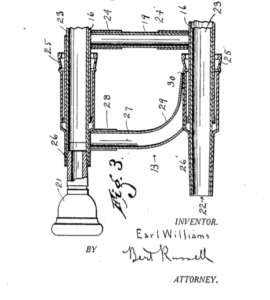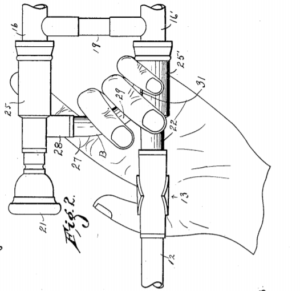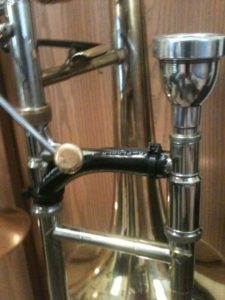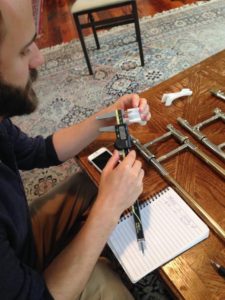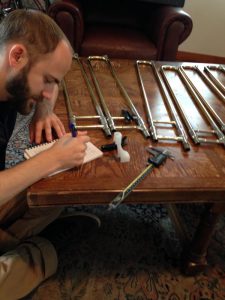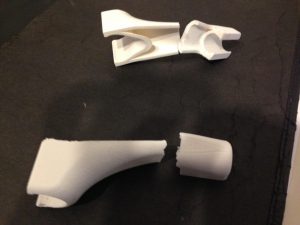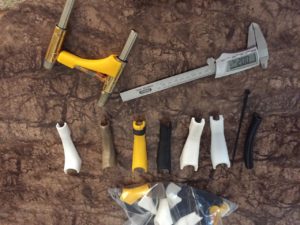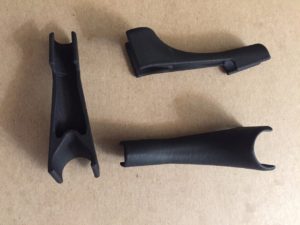I first became interested in trombone ergonomics when I started playing bass trombone full time in the Omaha Symphony. All I had when I won the job was a Bach 50, single trigger. I got along pretty well with that trombone, and borrowed a double-trigger horn if I needed one for pops concerts.
I knew I needed a double trigger horn, and I sent the Bach 50 to Steve Shires when he worked at Osmun Brass where he did a double trigger conversion. The reason I’m telling this story is because I also had him move the bell brace forward so I could hold the trombone like you do a straight tenor, with your thumb around the brace. Very few bass trombones and f-attachment tenors are made this way – why not? It’s a lot easier to just kind of hang the trombone by the crook of your thumb than it is to put extra pressure on the 3rd and 4th fingers to compensate for the weight of the instrument.
Evidently a lot of trombone players think the way I do, look how many of you have a Bullet Brace! I’ve got one, or something like it, on all of my big horns – except my Bach 50 with the brace moved to the right place.
That’s how I got started thinking about trombone ergonomics. Let’s face it, a trombone is an awkward instrument to hold and play. The left hand has to stabilize the instrument so the right hand and arm can move freely. But too much pressure or tension in the left hand and arm is detrimental. That tension has a tendency to effect other parts of the body, and before you know it, you’ve got tension everywhere.
